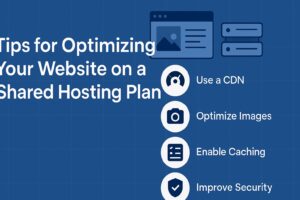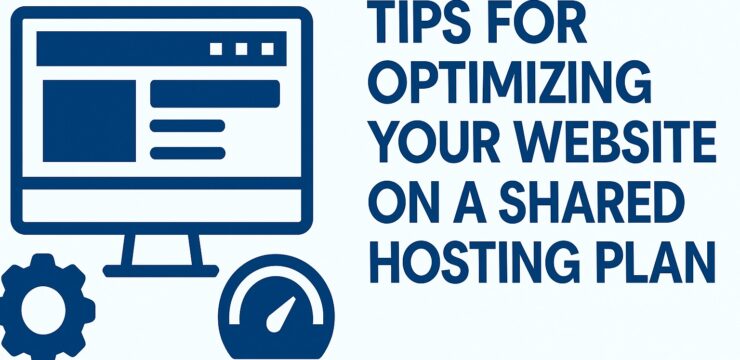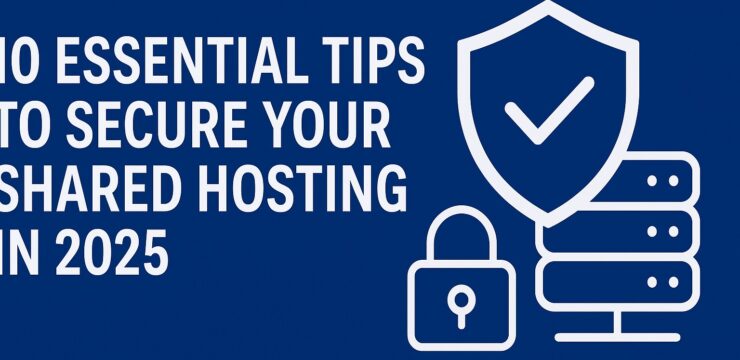
Shared hosting is a go-to solution for many beginners, bloggers, and small businesses due to its low cost and ease of use. However, because you share server resources with other users, it’s crucial to optimize your website to ensure speed, performance, and security. Below are essential tips to help you get the most out of your shared hosting plan.
1. Choose a Lightweight Theme and Minimal Plugins
The first step toward optimization starts with your theme and plugins. Heavy, complex themes can slow down your website drastically. Instead, opt for lightweight, responsive themes like Astra or GeneratePress, which are built for speed and compatibility. Avoid overloading your site with unnecessary plugins. Stick to essential ones, and delete any that you aren’t actively using. Fewer, high-quality plugins reduce the risk of performance issues and conflicts.
2. Implement Caching for Faster Load Times
Caching plays a critical role in improving your website’s speed. When enabled, it allows your site to serve static versions of pages, reducing server processing time. You can use plugins like W3 Total Cache or WP Super Cache to handle this automatically. Additionally, consider enabling browser caching and minifying CSS, JavaScript, and HTML files to reduce page load times even further.
3. Optimize All Images
Large image files are one of the biggest culprits behind slow websites. To avoid this, always compress your images before uploading. Tools like TinyPNG or WordPress plugins like Smush can do this effectively. Switch to modern image formats like WebP for better compression, and enable lazy loading so that images only load as the user scrolls down the page. This significantly reduces the initial load time.
4. Use a Content Delivery Network (CDN)
A CDN distributes your website’s static files across multiple servers worldwide, allowing users to access data from the server closest to them. This can dramatically improve load speeds, especially for global audiences. Services like Cloudflare, BunnyCDN, or KeyCDN integrate easily with shared hosting and often offer free or affordable plans.
5. Limit External Scripts
Third-party scripts like ad networks, analytics tools, social media widgets, and external fonts can slow down your website. Minimize the use of such scripts, and when possible, host them locally. Defer non-essential JavaScript files so they don’t block your page from rendering, improving perceived performance for your visitors.
6. Keep Your Site Software Updated
Running outdated versions of your CMS, plugins, or themes can leave your website vulnerable and inefficient. Regularly check for updates through your WordPress dashboard or hosting panel. Updates not only patch security issues but often come with performance improvements that benefit your site overall.
7. Enable GZIP Compression
GZIP compression reduces the size of your website’s files before they’re sent to a visitor’s browser. This helps speed up loading times without altering your site’s appearance or functionality. You can usually enable GZIP through your hosting control panel or manually via .htaccess.
8. Clean Your Database Regularly
Over time, your WordPress database collects clutter such as spam comments, old post revisions, and leftover data from deleted plugins. This can lead to slower queries and longer page loads. Use plugins like WP-Optimize or Advanced Database Cleaner to schedule routine cleanups and keep your database lean and fast.
9. Monitor Your Hosting Resource Usage
On shared hosting, your account is subject to strict limits on CPU, RAM, and bandwidth. Most hosting dashboards provide tools to monitor your usage. If your website is consistently reaching these limits, review your installed plugins or scripts for inefficiencies. In some cases, you might need to upgrade to a higher-tier plan or even switch to VPS hosting for more control.
10. Strengthen Your Website’s Security
Security isn’t just about protection—it also affects your site’s performance. Hacked or infected websites often become slow or unresponsive. Install a security plugin like Wordfence or Sucuri to actively monitor and protect your site. Make sure you have an SSL certificate installed (often available for free via Let’s Encrypt), and use strong admin passwords that are changed regularly.
Final Thoughts
While shared hosting has its limitations, a well-optimized website can still perform beautifully. By choosing efficient themes, compressing images, enabling caching, and maintaining clean code and databases, you can enhance your site’s performance without breaking the bank. These small but powerful tweaks help ensure that your website runs smoothly, even in a shared environment.



